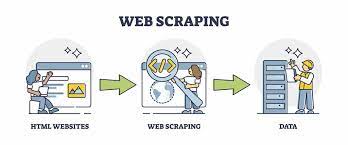Efficient web crawling is essential for maximizing the speed and effectiveness of data scraping. Here are some strategies to consider for efficient web crawling:
- Set Priorities and Focus:
- Define the specific data you need to scrape and prioritize it based on relevance and importance.
- Focus on high-value pages or sections of websites that contain the most valuable information.
- Avoid crawling unnecessary pages or content that are irrelevant to your objectives.
- Use Intelligent Crawling Techniques:
- Implement techniques like URL filtering, content analysis, or machine learning algorithms to identify and prioritize valuable data for extraction.
- Utilize techniques such as link analysis or page similarity to discover related content that may be of interest.
- Employ techniques like incremental crawling to focus on new or updated content since the last crawl.
- Respect Robots.txt and Crawl Delays:
- Adhere to the guidelines specified in the website’s Robots.txt file to respect the website owner’s crawl preferences.
- Respect crawl delay directives to avoid overloading servers and minimize the impact on website performance.
- Configure your crawler to have a delay between requests to simulate human-like browsing behavior.
- Implement Parallelization and Distributed Crawling:
- Distribute the crawling workload across multiple machines or instances to increase throughput and speed up the process.
- Use distributed computing frameworks or cloud-based solutions to parallelize crawling tasks and handle large-scale scraping efficiently.
- Ensure proper coordination and synchronization between crawler instances to avoid duplicate requests and maintain consistency.
- Optimize Network Requests:
- Minimize the number of requests by employing techniques like URL normalization and deduplication.
- Use HTTP request headers efficiently, including caching headers, to reduce redundant requests.
- Implement mechanisms such as HTTP connection pooling to reuse connections and minimize the overhead of establishing new connections.
- Handle Errors and Retries:
- Implement robust error handling mechanisms to handle network errors, timeouts, or other failures gracefully.
- Retry failed requests using appropriate back-off strategies to handle temporary errors or server congestion.
- Monitor and log encountered errors to identify patterns and improve the crawling process.
- Utilize Caching:
- Implement caching mechanisms to store and reuse previously scraped data, reducing the need for redundant requests.
- Cache static assets like CSS files, JavaScript files, and images to minimize network traffic and improve crawling speed.
- Monitor and Optimize Performance:
- Continuously monitor the performance of your crawling system, including metrics like crawl rate, success rate, and resource utilization.
- Analyze performance bottlenecks and identify areas for optimization, such as optimizing network communication, improving data extraction efficiency, or refining crawling strategies.
- Regularly review and fine-tune your crawling system based on the collected metrics and analysis.
- Respect Website Policies and Legal Considerations:
- Familiarize yourself with the website’s terms of service and legal restrictions.
- Ensure that your crawling activities comply with the website’s policies, such as rate limits or restrictions on scraping certain content.
- Be mindful of copyright and intellectual property laws when scraping data from websites.
Implementing these strategies will help you optimize the efficiency and speed of your web crawling activities, allowing you to scrape data more effectively.
SHARE
